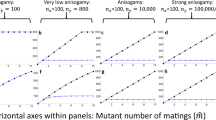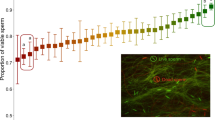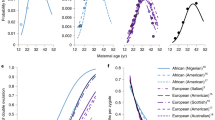Abstract
IN two previous papers1,2, I have referred to artificial insemination from the genetical point of view and arrived at the conclusion that the genetical reduction it produces is its main disadvantage. Recently, Sir John Russell in a lecture on “World Population and World Food Supplies”3 gave hopes of a better future. Referring to artificial insemination he said : “We may yet live to see bulls, other than a small select aristocracy, become unwanted anachronisms”. My own opinion is that even in cattle democracy is a fundamental necessity, therefore I fully share Sir John's “lurking suspicion that Nature may resent being unceremoniously bundled out in this way”, as he states a few lines after his rather sweeping statement. Nature would resent the genetical reduction produced by the increase of females in the ratio of 1 male to n females.
This is a preview of subscription content, access via your institution
Access options
Subscribe to this journal
Receive 51 print issues and online access
$199.00 per year
only $3.90 per issue
Buy this article
- Purchase on Springer Link
- Instant access to full article PDF
Prices may be subject to local taxes which are calculated during checkout
Similar content being viewed by others
References
Rabasa, S. L., An. Soc. Rural Argentina, 82, No. 12 (1948).
Rabasa, S. L., Ciencia e Invest., 6, 204 (1950).
Russell, E. J., Nature, 164, 379 (1949).
Author information
Authors and Affiliations
Rights and permissions
About this article
Cite this article
RABASA, S. Genetical Reduction of a Reproductive Unit in Relation to the Male–Female Ratio. Nature 166, 821–822 (1950). https://doi.org/10.1038/166821a0
Issue Date:
DOI: https://doi.org/10.1038/166821a0
This article is cited by
-
Genetic Variability and Artificial Insemination
Nature (1951)
-
Genetic Variability and Artificial Insemination
Nature (1951)
Comments
By submitting a comment you agree to abide by our Terms and Community Guidelines. If you find something abusive or that does not comply with our terms or guidelines please flag it as inappropriate.



